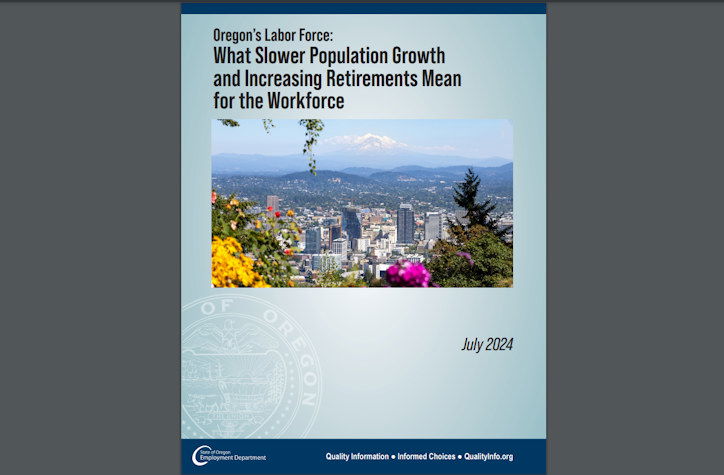Why are so many Oregon businesses challenged filling job openings? State economist looks at the factors

SALEM, Ore. (KTVZ) -- The youngest members of the large Baby Boom Generation, born between 1946 and 1964, turn 60 years old this year. Workers in this age group have been and are expected to continue shifting into retirement - "taking their skills and experience with them," a state economist said Thursday.
State Employment Economist Gail Krumenauer looks in this new report at how slower population growth and more retirements have combined to make for a tight labor market:
- In 1990, one out of 10 Oregon job holders was age 55 or older. By 2022, that share grew to 24%.
- In 2023, the number of Oregonians not in the labor force due to retirement reached 786,000, an all-time high. Over the past decade, the number of Oregonians not in the labor force due to retirement grew by 160,000 or 26%.
The workforce is aging nationally as well, but Oregon has been at a workforce advantage in boosting its labor force. Decades of population growth – driven primarily by net in-migration – has helped fuel labor force growth, even as the workforce has aged and overall labor force participation rates have generally declined.
- Oregon's population grew by 40% between 1993 and 2023, compared with 30% for the U.S.
- Oregon’s natural increase in population turned negative in 2021 and 2022, with fewer births than deaths, as the COVID-19 pandemic met the long-term trends of an aging population and lower birth rates.
- In 2021, for the first time in almost four decades, population estimates showed negative net migration, and an overall decline in Oregon’s population.
The declines in natural increase, net migration, and population have contributed to slower labor force growth. Slower gains may be somewhat offset by greater labor force participation among the existing population.
- Oregon’s labor force participation rate was 62.4% in 2023, the highest in a decade. That’s still well below the peak of 68.9% in 1998.
During periods like the past couple of years, where low unemployment and relatively large numbers of job openings are paired with slow labor force growth, that creates a tighter labor market for Oregon employers. That makes it harder for employers to find enough workers to fill all their job openings.
These dynamics may have also contributed to Oregon’s slower job growth in recent years, compared to the U.S.
Nationally, total nonfarm payroll employment expanded by 3.4% between 2019 and 2023, while Oregon's expanded jobs by 1.2%. This is a change; typically Oregon’s job (and labor force) growth exceeds the nation’s over business cycles.
If recent labor force and unemployment trends continue, they might further limit Oregon’s growth potential relative to historic norms and the nation. More details are available in the full report at QualityInfo.org.